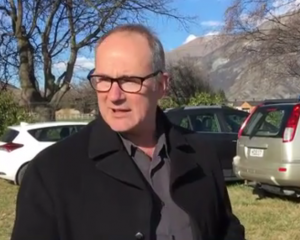In addition, the district's bridges would be a major issue over the next 30 years.
Central Otago District Council's Scott Graham said more than half, 59%, of the district's roads were classified as low volume and would be a lower priority for funding.
Mayor Tony Lepper said some roads could slowly deteriorate, possibly over 20 years.
Ratepayers might have to lower their expectations for roading.
''We have always thought that because of the climatic conditions we needed to build a high standard road,'' Mr Lepper said.
''But maybe that was too high a standard, and the risk is the public have got used to that so think ours are normal.''
Despite those concerns, Mr Lepper said the government review of funding assistance rates by the New Zealand Transport Agency was not expected to affect the council ''too much''.
Under the new scheme, the Central Otago District Council would receive a 52% subsidy on roading projects, an increase of one percentage point on what it now received, Mr Lepper said.
''The threat to us comes from reduction in the overall budget.
''For our district we are making more changes in where we spend that funding, and we have to consult with our public about that.''
He did not expect ratepayers would pay more under the new model.
Council roading engineer Scott Graham said once the Government's direction on funding had been released, the council would be able to further consider the impact to ratepayers.
But it was expected to be similar to the past three years.
The council already used a national system to classify its roads, to best plan its spending.
One option to reallocate funding to Central Otago major roads was to reduce the total distance of road maintained. It could mean fixing fewer gravel roads, he said.
He said the council did not ''believe'' there would be any effect on road safety.
The council said bridges were a major issue for the region over the next 30 years.
Mr Graham said a bridge that did not qualify for NZTA funding would have to be paid for in full by the council, or closed.
''We are now hitting a bow wave of bridges that are coming to the end of their useful lives,'' Mr Graham said.
''These are the sort of real issues we, and no doubt other councils, are facing at the moment.''
Mr Graham recently identified seven bridges as the most expensive expected to be due for replacement in Central Otago over the next 30 years.
They included the Little Valley Rd bridge over the Manuherikia River, the Millers Flat Rd bridge (Clutha River) and the Scott Lane bridge (Kyeburn River), among others.
Thirty-five bridges would need replacement or serious work.
Major bridges took up about 50% of renewal costs for roading.
For the past 11 years, maintenance budgets per year had been about $66,000, but the baseline budget was expected to increase to $96,000 a year.
Around Otago
North Otago: Changes cause of council concern...
South Otago: Could push rates up 7.2% ...
Southland: Council 'can live with' reduced funding level ...
Queenstown: Affordability a major issue ...
Dunedin: Funding better than expected ...






